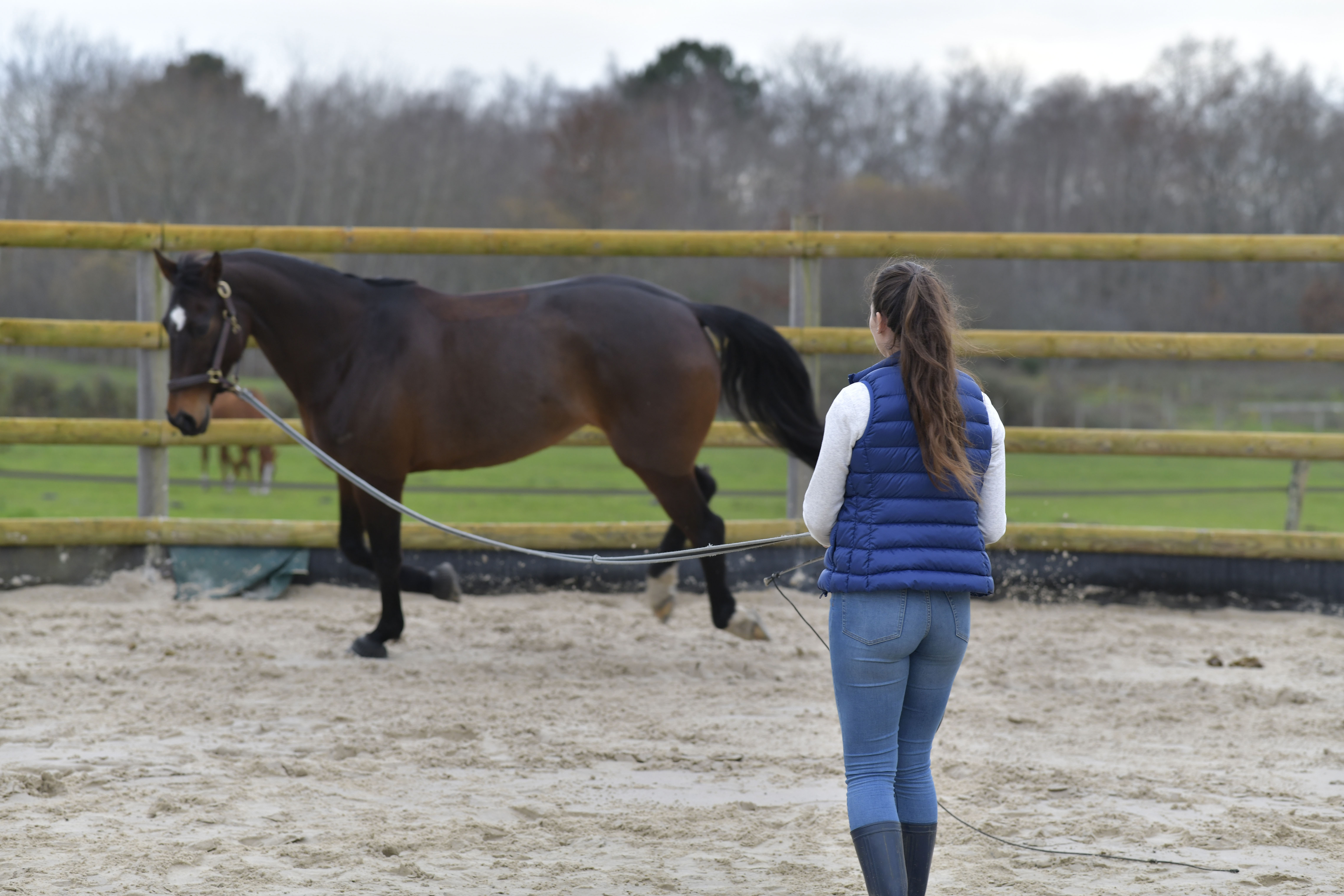Home > Horse Care > Make the most of longeing sessions
Make the most of longeing sessions
- March 4, 2024
- ⎯ Equus
A longe line can be a valuable training tool. Longeing sessions may help an anxious horse “settle” before a ride and provides a controlled way for a rider to learn to post or improve her seat. But as useful as longeing can be, it’s important not to overdo it.

It takes some effort for a horse to maintain balance while moving in tight circles, so if you ask him to longe for extended periods of time you risk straining his muscles, tendons and ligaments. Young or out-of-shape horses are the most susceptible to acute and chronic injuries related to longeing.
Click here to learn what behavior may indicate lameness in horses.
To make longeing safer for your horse, remember that it is an athletic effort rather than simply a training technique. That means you may need to condition your horse to repeatedly turn tight circles. If you’re working with a young, out-of-shape or infrequently longed horse, limit initial sessions to eight or 10 minutes. Then, over several weeks, slowly increase the length of your longeing sessions. If your horse appears to be out of breath, straining to keep his balance or otherwise stressed, it’s time to stop and return to work on the straightaway. Keep in mind that the same guidelines apply for work in a round pen. In terms of physiology, it is the same as longeing.
A horse who is properly conditioned to longe and does so regularly is much less likely to be hurt than one who is put on the line only occasionally. That’s why an older lesson horse may be able to handle daily longe work just fine while a younger horse longed only once in a while to “buck it out” can pull up lame.
Of course, no matter how well your horse is conditioned for longeing, doing circles on slippery, hard or excessively deep footing can lead to injuries. If you wouldn’t ride on the footing, don’t longe on it either.
This article first appeared in EQUUS issue #444.
Don’t miss out! With the free weekly EQUUS newsletter, you’ll get the latest horse health information delivered right to your in basket! If you’re not already receiving the EQUUS newsletter, click here to sign up. It’s *free*!





